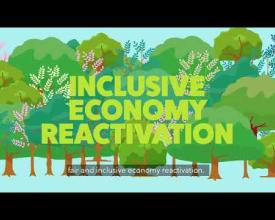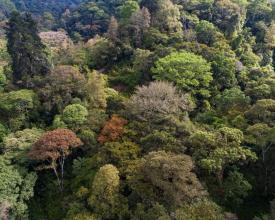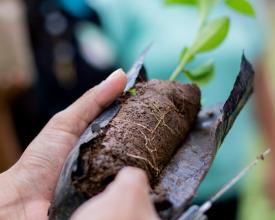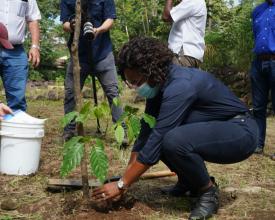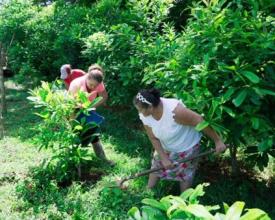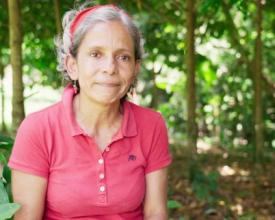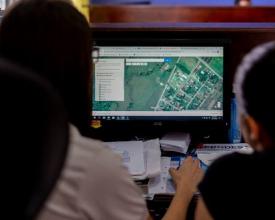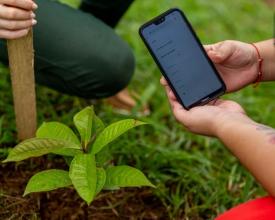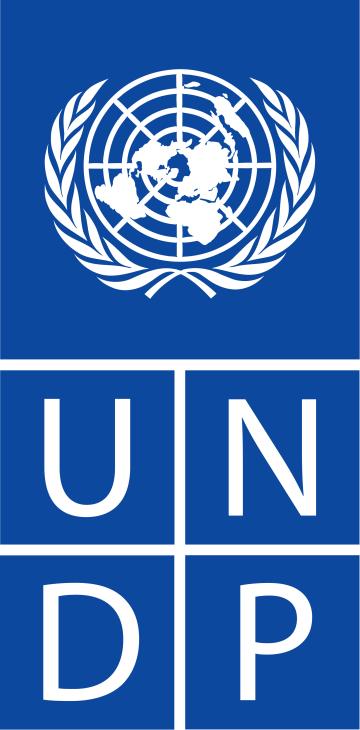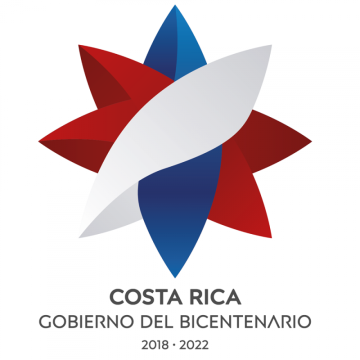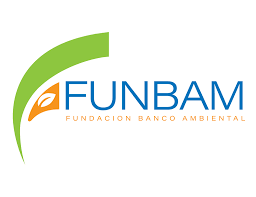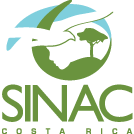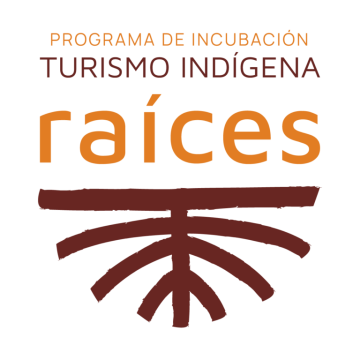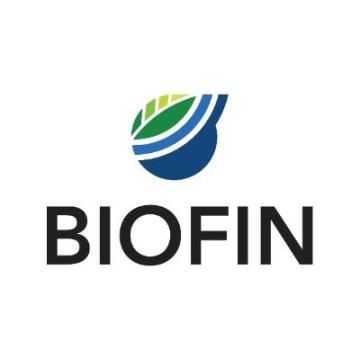
Footprints4ourFuture: A Crowdfunding Campaign for Sustainable Reforestation and Job Creation in Costa Rica
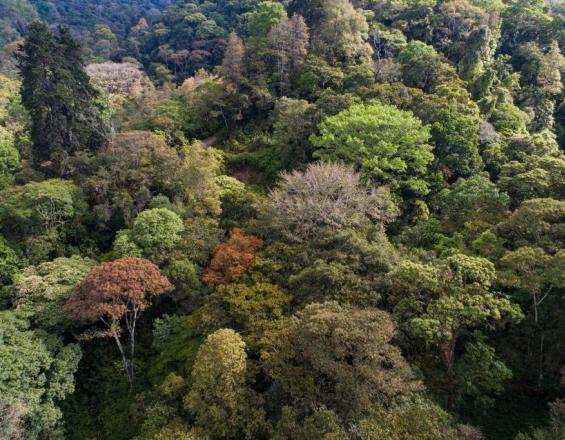
In Costa Rica, the #Footprints4ourFuture (Huella del Futuro) crowdfunding campaign was launched in 2020 by UNDP Biodiversity Finance Initiative (BIOFIN) in partnership with the Government of Costa Rica, the Ministry of Environment and Energy (MINAE), the Environmental Forestry Fund (FONAFIFO), and the Environmental Bank Foundation (FUNBAM).
Spearheaded by the Vice-President, the campaign seeks to raise USD 1.9 million to reduce unemployment exacerbated by COVID-19, while reforesting public lands and maintaining the newly planted trees for five years. Its first phase has focused on Northern Costa Rica, a region highly exposed to climate change and deforestation, where already vulnerable populations, and especially women, were disproportionately affected by the pandemic.
By August 2024, #Footprints4ourFuture had raised USD 1.8 million, planted 250,000 trees (25% above the initial target) and supported 3,548 individuals through green jobs and wages.
Context
Challenges addressed
Costa Rica, a global biodiversity hotspot, hosts 5 to 6% of the world’s known species. Although forest cover in the country has increased from 25% in the 1990s to 52% in the 2020s, threats to ecosystems remain, such as reconversion to monocultures, deterioration due to agrochemicals, and fragmentation driven by urban and infrastructure expansion.
The existing biodiversity finance gap contributes to this scenario. Although Costa Rica spends 0.75% of its gross domestic product (GDP) on biodiversity, the gap is estimated to range between 0.07% of the GDP in a modest scenario and 1.2% in a critical post-pandemic projection, according to UNDP BIOFIN.
COVID-19 aggravated the country’s economic situation, affecting vulnerable communities and pressuring the allocation of funds to biodiversity. Rural women in Northern Costa Rica were particularly impacted, given the region’s exposure to climate change hazards, their nature-dependent incomes, and the disruption of economic activities during the pandemic.
Location
Process
Summary of the process
The combination of a variety of donation options and marketing strategies has been key to ensuring the sustainability of contributions and, consequently, enabling the use of funds to improve the living conditions of vulnerable populations through green jobs and reforestation efforts. Multi-stakeholder partnerships complement these efforts, supporting the effective design of the campaign — such as the inclusion of varied donation methods — and the provision of green jobs to those most in need — through collaborations with women-led organizations. Lastly, the innovative tool for monitoring tree planting and maintenance, by increasing transparency and accountability, fosters continued engagement, strengthens local actors’ trust, and encourages donors to contribute.
Building Blocks
Combining a variety of donation options and marketing strategies to promote contributions
Donors can contribute to the campaign through different packages/amounts: “My Footprint” (one tree for 15 USD), “Family Footprint” (10 trees for USD 150), “Small Business Footprint” (100 trees for USD 1,500), and “Corporate Footprint” (1,000 trees for USD 15,000).
These packages can be purchased on the campaign’s website, that launch to a national account for FUNBAM. It is also possible to contribute by directly making bank transfers to an account in dollars or Costa Rican colones, or quickly donate using SINPE Móvil, the country’s instant mobile money transfer system. Companies and organizations, as well as Embassies made the transfer through this modality under a signed agreement with FUNBAM (the executing agency). Initially, it was also possible to donate through UNDP’s international platform, which was later removed since outreach activities were nationally focused.
Moreover, through a partnership with the corporate hardware store Ferretería EPA, customers in seven physical stores are invited to donate their spare change and complement to plant a tree, reaching those who may not have been initially aware of the campaign.
Finally, for the 1,000-tree corporate package, meetings were arranged with potential partner companies to encourage collaboration. Embassies such as Spain, Italy and others also used this modality.
Enabling factors
The effective promotion of the campaign has gone hand in hand with the success of these various donation platforms. The marketing strategy has included social media, Google and TV ads, as well as support from the national television program Más que Notícias through specials and interviews.
The availability of technology, human expertise, and funding to sustain the online donation platform are other enabling factors.
Lesson learned
- It is important to align the campaign with larger impact, policy or institutional goals (in Costa Rica, to achieve 60% forest cover by 2030).
- Engaging high-level champions, such as former Vice President of Costa Rica Epsy Campbell, fosters mobilization for the campaign.
- Delivering with credible public organizations (FONAFIFO, UNDP) contributes to building public trust in the campaign.
- It is fundamental to include measures for transparency and traceability of funds and results (georeferenced trees, and donor and results report).
- Comms, comms, and more comms support campaign’s success:
- Clear graphic design throughout the campaign (logo, social media, life stories, press, presentations, face masks, videos, storyline, and alliances).
- Investment in a designer, a PR specialist, and dedicated time for campaign execution.
- It is necessary to effectively mobilize resources through a diverse outreach and marketing strategy with target audiences:
- The donation page by itself is limited in mobilizing donations. It is more effective to engage funds, bilateral donors, and private and public companies through one-on-one meetings and interactions.
Resources
Using funds to improve the living conditions of vulnerable populations while promoting tree planting and ongoing maintenance in an integrated way
Funds raised were used both to cover reforestation costs and to create hundreds of green wages and jobs. On the one hand, Costa Rica aims to reach 60% of forest cover by 2030, and seedlings require ongoing care to ensure they survive and thrive. On the other hand, the socioeconomic conditions of already vulnerable communities in the northern region of the country worsened with the COVID-19 pandemic.
#Footprints4ourFuture addresses these two challenges in an integrated way. Each tree planted comes with a five-year maintenance plan to ensure its survival. This plan is implemented by local workers who plant and prune trees, improving the living conditions of vulnerable populations and providing a sustainable source of income beyond the period of the pandemic. This approach also contributes to raising local awareness and promoting community ownership of reforestation efforts.
Enabling factors
Community interest and willingness to carry out green jobs, along with the long-term availability of funds for the five-year maintenance plan, are key factors for success.
Lesson learned
Biodiversity conservation and restoration initiatives have a higher likelihood of success when combined with financial support for vulnerable participant populations. This approach allows initiatives to address both socioeconomic and environmental issues simultaneously, besides encouraging local community participation and fostering openness to environmental education.
Furthermore, reforestation and other environmental activities should prioritize ongoing maintenance, as it ensures that the initial investment yields long-term results.
Multi-stakeholder partnerships for effective campaign design and gender-responsive implementation
The crowdfunding campaign is based on multi-stakeholder partnerships, which have enabled its effective design and helped target those most in need.
UNDP BIOFIN supported the conceptualization, development, and implementation of the campaign, in addition to engaging in technical and political dialogues and conducting presentations with potential donors. FUNBAM hosts the operations of the campaign within its structure. Other co-creation partners are the MINAE, responsible for issuing environmental licenses, and FONAFIFO. By leveraging this pool of diverse capacities, the campaign has been effectively designed, successfully attracted donors, and able to operate on Costa Rican public lands.
When it comes to implementation, it was identified that women, especially those heading households, were particularly affected by COVID-19. Therefore, the distribution of funds collected through the campaign is built on strong local community and gender-based principles. Green jobs for planting and maintenance activities are currently provided through collaborations with 17 implementing partners, nine of which are women-led local organizations.
Enabling factors
Enabling factors include the willingness of partners with diverse capabilities to join the campaign and contribute their expertise, access to local communities and the development of a relationship of trust, and the prior assessment of local needs to ensure that the campaign is designed to address them effectively.
Lesson learned
Multi-stakeholder partnerships, involving both private and public sector actors, are crucial for enhancing the effectiveness of crowdfunding campaigns, especially those targeting public lands or large-scale projects such as reforestation.
Resources
Innovative tools for monitoring tree planting and maintenance
The solution includes an online map on #Footprints4ourFuture’s website, through which it is possible to monitor tree planting and maintenance. This innovative tool was developed by a group of young women from the north of Costa Rica. It provides data on the number and location of trees planted, including their species, planting date, and care detail. By enabling contributors to locate their specific tree on the map, the tool enhances transparency and accountability, potentially encouraging adherence to the campaign. It also provides valuable information for the monitoring and evaluation of #Footprints4ourFuture.
Enabling factors
Enabling factors include the availability of funding and technological support for maintaining the tool. Moreover, the map’s ability to enhance accountability and transparency depends on contributors’ being aware of its existence and using it to track progress.
Lesson learned
Monitoring and evaluation tools are essential to engage donors and partners, besides ensuring that the project stays on track to achieve its intended impact, and enabling timely adjustments if needed.
Impacts
By August 2024, #Footprints4OurFuture had raised USD 1.8 million, 94% of the initial target. Contributors include 2,544 individual donors, 23 private companies, 7 embassies, and 7 public institutions. Moreover, it is estimated that over 7,000 people donated their leftover change at Ferretería EPA stores, supporting the campaign.
Resources were used for tree planting and ongoing care, in addition to the provision of green wages and regular jobs for conducting these activities. 250,000 trees were planted in Northern Costa Rica, 25% above the initial target. It is estimated that 3,548 people have been supported with the campaign, 237 through regular green jobs. 53% of the resources have been allocated to women.
Since the second quarter of 2024, and especially throughout 2025, the campaign has expanded to other regions of Costa Rica, with 1,782 additional trees planted in areas including Puntarenas, Cartago, and the Greater Metropolitan Area of San José.
Beneficiaries
Direct beneficiaries include vulnerable populations in Northern Costa Rica who were provided green jobs through the campaign. The whole population of Costa Rica benefits from the solution through an improved environment and its associated ecosystem services.
Global Biodiversity Framework (GBF)
Sustainable Development Goals
Story
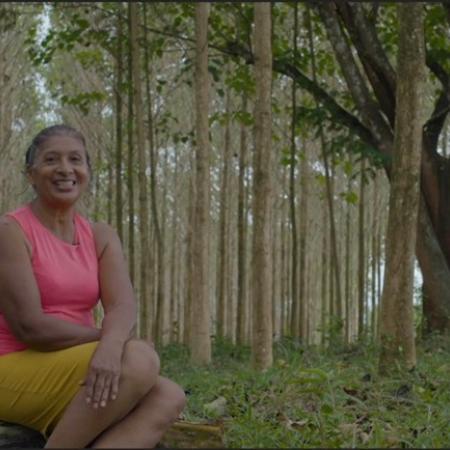
Guillermina Alemán shared how the #Footprints4ourFuture campaign has influenced her livelihood and her relationship with the environment. Like many in her region, she grew up working in the field, mainly tending cattle and pastures. She explains that clearing trees and burning the remaining vegetation to expand grazing land was a common practice in the area.
Things changed when a neighbor suggested that Guillermina reforest the area, and she learned about the #Footprints4ourFuture campaign. She admits that, at first, she did not believe in the benefits of reforestation. Yet, she engaged in the efforts, received financial support, and now enjoys the rewards provided by nature. “Now […] we plant forest and it looks so beautiful. What we had before was hot and lazy, now when you come here, you really feel the change”, Guillermina shares. She explains that the campaign taught her and the other participants how to take care of the environment.
There was also a positive influence over Guillermina’s livelihood. After years of intense work in the field, she says that her life has changed significantly, since the project has allowed her to rest.
We invite you to check Guillermina’s full story through the following link: https://huelladelfuturo.cr/en/proyectos/footprints4ourfuture-guillermina-aleman.
